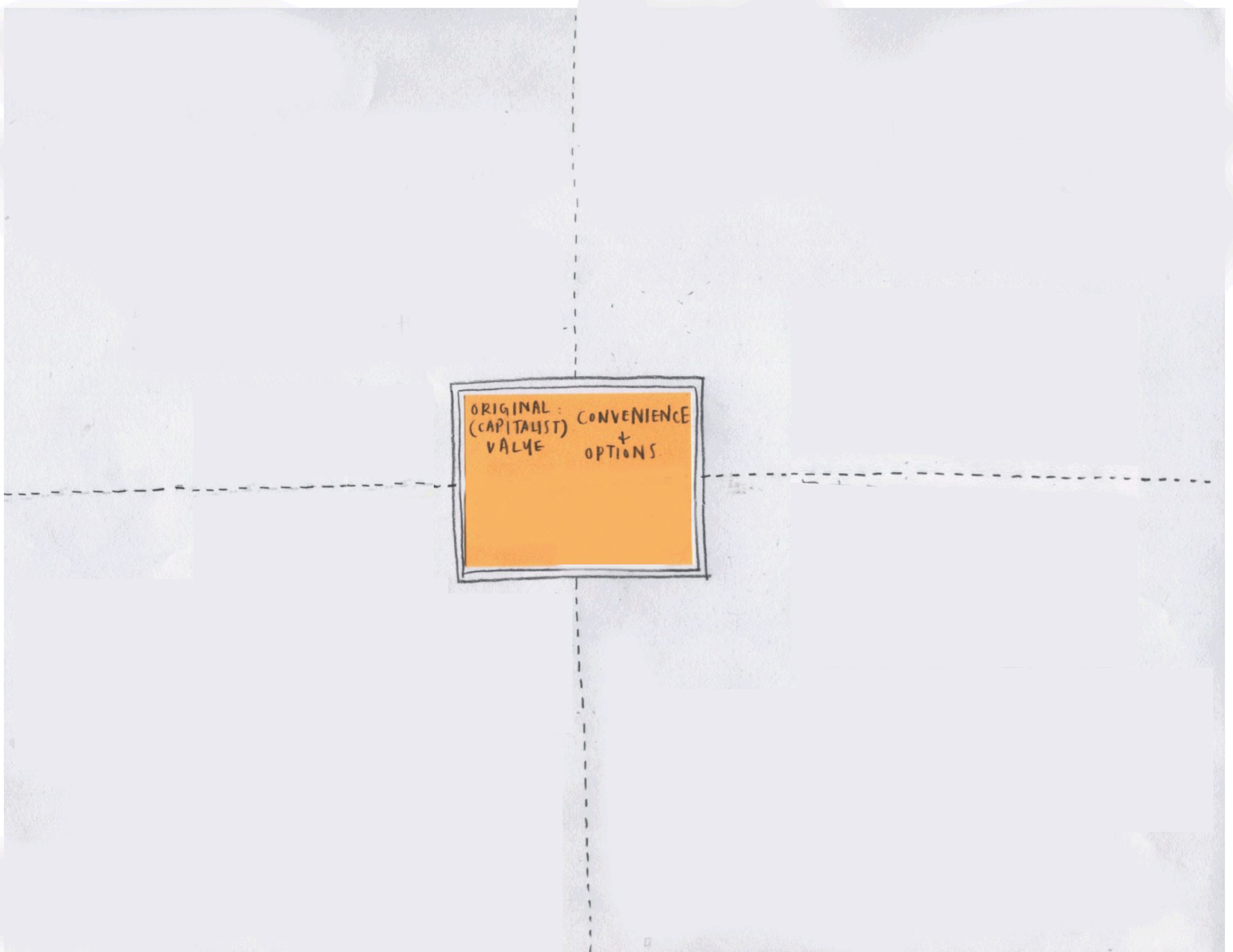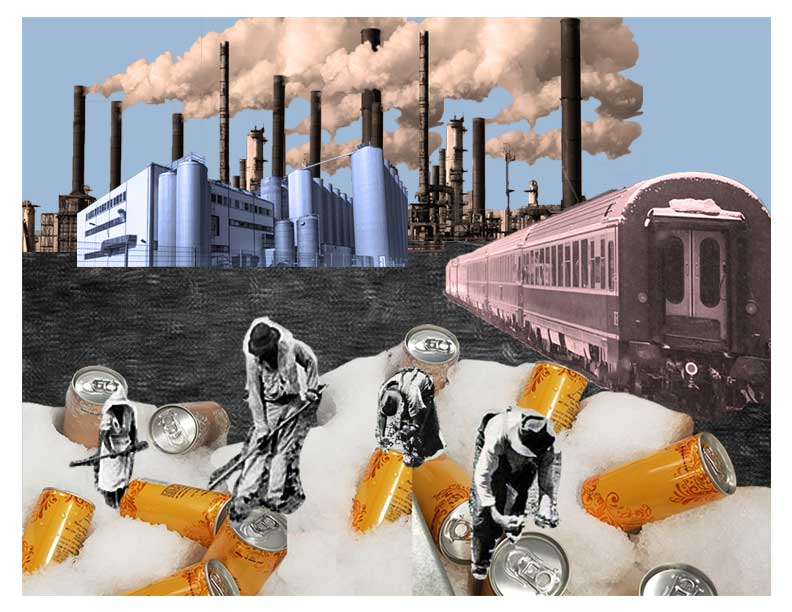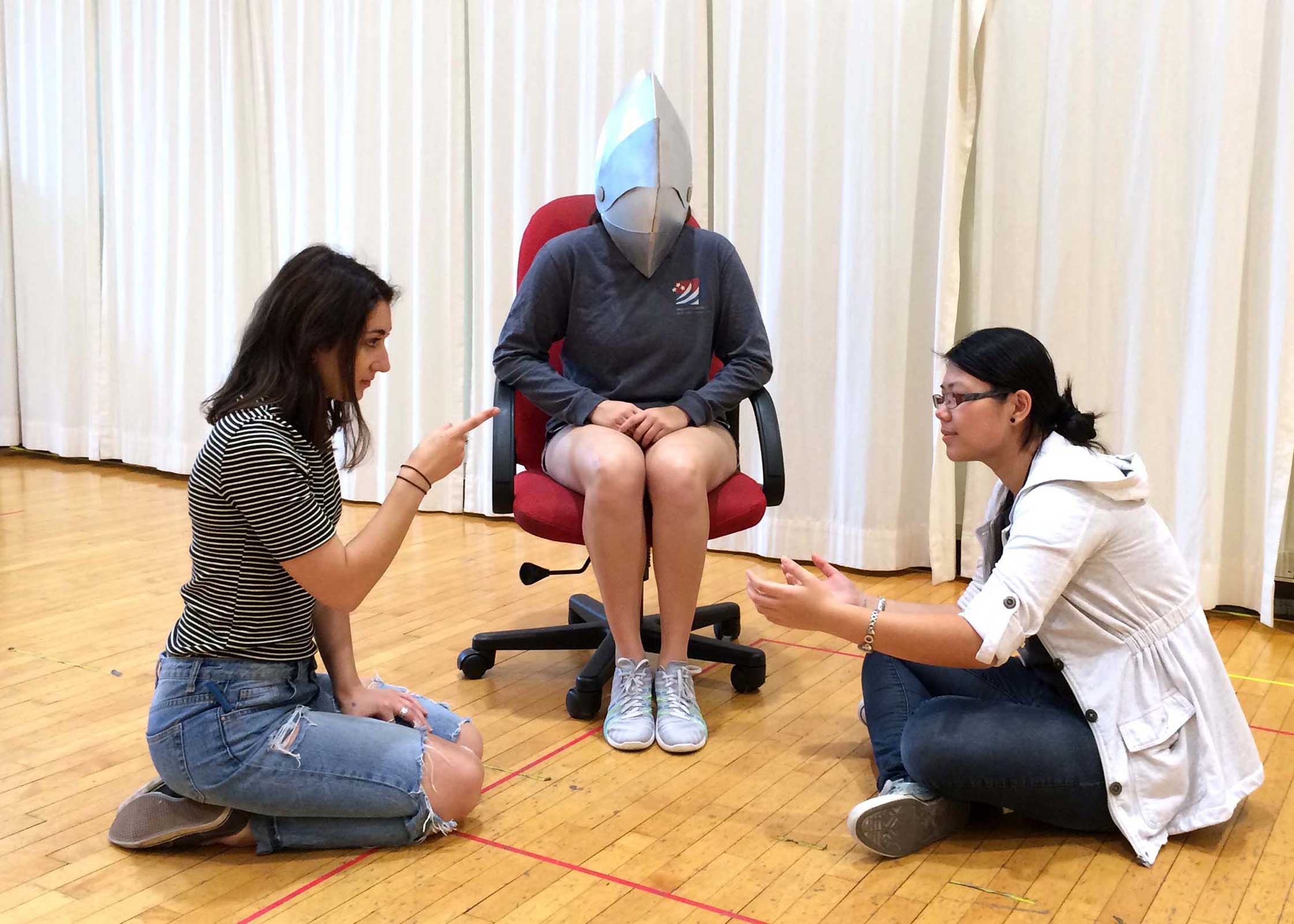January 2017-May 2019
Radical Design
A series of courses and workshops exploring speculative design as a practice to imagine what civic life might look like if we prioritized different values
––
Click the images below to explore student work and assignments.
––
Click the images below to explore student work and assignments.
Why Radical Design?

In our daily work as designers, we are limited by expectations about what kinds of futures are ‘possible’. Particularly when addressing the needs of vulnerable populations, potentially impactful proposals are often deemed ‘impossible’, not because they defy physical laws or require speculative technology, but because the social system around us prioritizes things like growth, profit, and control over things like care, cooperation, and equity. Our current prioritization of values is not eternal or inevitable, but it does have a strong grip on our imaginations. It is difficult to imagine a world where we prioritize values differently.
These Radical Design courses and workshops build on tactics from Speculative Design and Futures Studies to strengthen participant’s capacity to imagine. By designing for provocation and imagination as an end result, rather than designing to implement concepts, these practices allow designers to visualize ideas that do not fit in the world as it is. Radical Design projects strive to walk the line between utopia and dystopia, avoiding a purely positive or negative depiction of reality in order to grapple with the tensions inherent in each possibility.
___
The course “Radical Design: Making Civic Experiences” was offered at the Sam Fox School at Washington University in St. Louis between Spring 2017 - Spring 2019.
Workshops have been offered at:
These Radical Design courses and workshops build on tactics from Speculative Design and Futures Studies to strengthen participant’s capacity to imagine. By designing for provocation and imagination as an end result, rather than designing to implement concepts, these practices allow designers to visualize ideas that do not fit in the world as it is. Radical Design projects strive to walk the line between utopia and dystopia, avoiding a purely positive or negative depiction of reality in order to grapple with the tensions inherent in each possibility.
___
The course “Radical Design: Making Civic Experiences” was offered at the Sam Fox School at Washington University in St. Louis between Spring 2017 - Spring 2019.
Workshops have been offered at:
- Imagining America (Chicago, October 2018)
- Creative Reaction Lab (St. Louis, June 2018)
- Commonbound Conference, New Economy Coalition (St. Louis, June 2018)
- Washington University AIGA (St. Louis, April 2017)
- and as a part of other Washington University courses such as Designing Creativity and Design & Research

Spring 2019
Washington University in St. Louis
Radical Design: Making Civic Experiences
Sully Bacerdo and Wauson Liang
The Landed Gentry
The final project of the Radical Design semester-length course asks students to create an artifact from a world with different priorities – in this case, a world without Capitalism. Throughout the semester, students worked in groups to understand what Capitalism is, and to imagine how things might be different if we prioritized different values: public instead of private, or care instead of profit.
Sully and Wauson’s project, shown above, builds on their learning about Distributism. As they described in their presentation, “A key tenet of [Distributism] is that Capitalism and Communism are two sides of the same coin in which you always have a very centralized distribution of wealth. Geographically and amongst certain wealthy elites, there’s always going to be a much higher proportion of power, land, and especially means of production. This economic theory that was popular in the late 1800s, early 1900s, was the idea that the only way we could overcome that barrier would be to distribute, (hence the name), the means of production across the widest range of people possible.”
“That got us thinking about land, and how land is your means of production and is often closely tied to your occupation. In modern society, the Proletariat or working class, lower class people are fully reliant on economic systems that are centered in cities, around banks, around corporations, around rich people. They have to live in this periphery and orbit and commute into these centers of wealth. They rely on it for the ability to put food on the table, to have a living and a job. That gets into our title and our value of the Landed Gentry. We first looked at land, we were exploring ‘What if everyone in our society could have their own piece of land and thus have their own means of production on that land?’
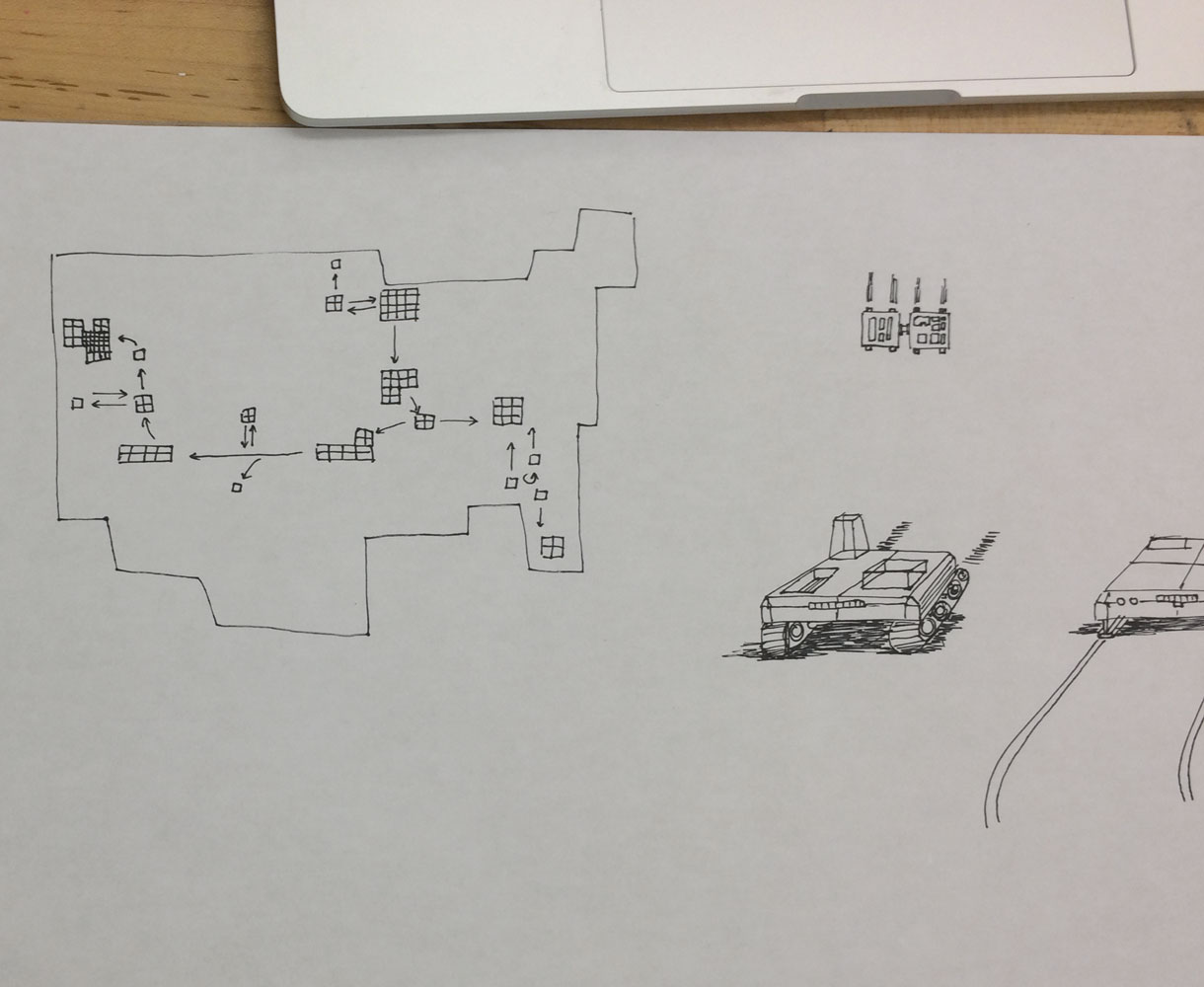
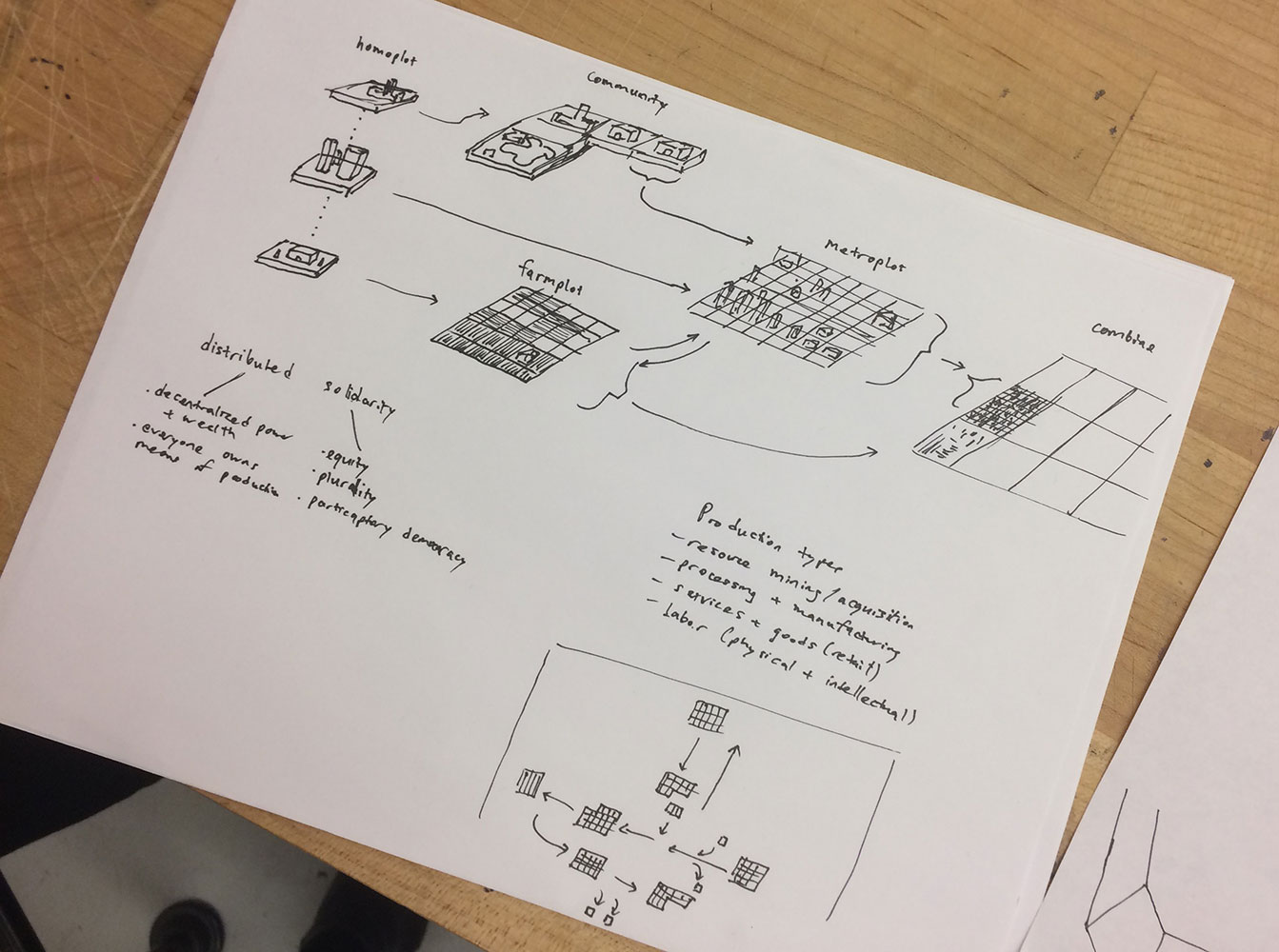
“It started off as this mechanical idea that people would have their plot of land that they could up and move, go anywhere, have freedom of mobility, produce whatever they wanted on that land. It evolved into a more biological concept, cells traversing across an organism. We thought it’s less important the idea that a person has a physical plot of land to live on, and more important that we use our artifact to manifest this relationship between the person and their own ability to sustain themselves. We converted the idea from a plot of land into this artifact, which is essentially a external, completely mobile mini-farm, mini-plot of land that goes with you everywhere and is integrated into you.”
“In a society where everyone has this thing, nobody can be disenfranchised from their means of production.”
“It’s always with you, it moves with you everywhere. No one can take that away from you. You never have to worry about whether or not there’s food on the table, whether or not you can produce and sustain for yourself. What kinds of social interactions? What kinds of cultural possibilities? What would the world be like if people didn’t have to worry about having occupations that they didn’t love, didn’t enjoy, that were physically and emotionally harmful to them? And were just able to explore their passions and do what they wish because they know they never have to rely on a job for food?”
“In a society where everyone has this thing, nobody can be disenfranchised from their means of production.”
“It’s always with you, it moves with you everywhere. No one can take that away from you. You never have to worry about whether or not there’s food on the table, whether or not you can produce and sustain for yourself. What kinds of social interactions? What kinds of cultural possibilities? What would the world be like if people didn’t have to worry about having occupations that they didn’t love, didn’t enjoy, that were physically and emotionally harmful to them? And were just able to explore their passions and do what they wish because they know they never have to rely on a job for food?”
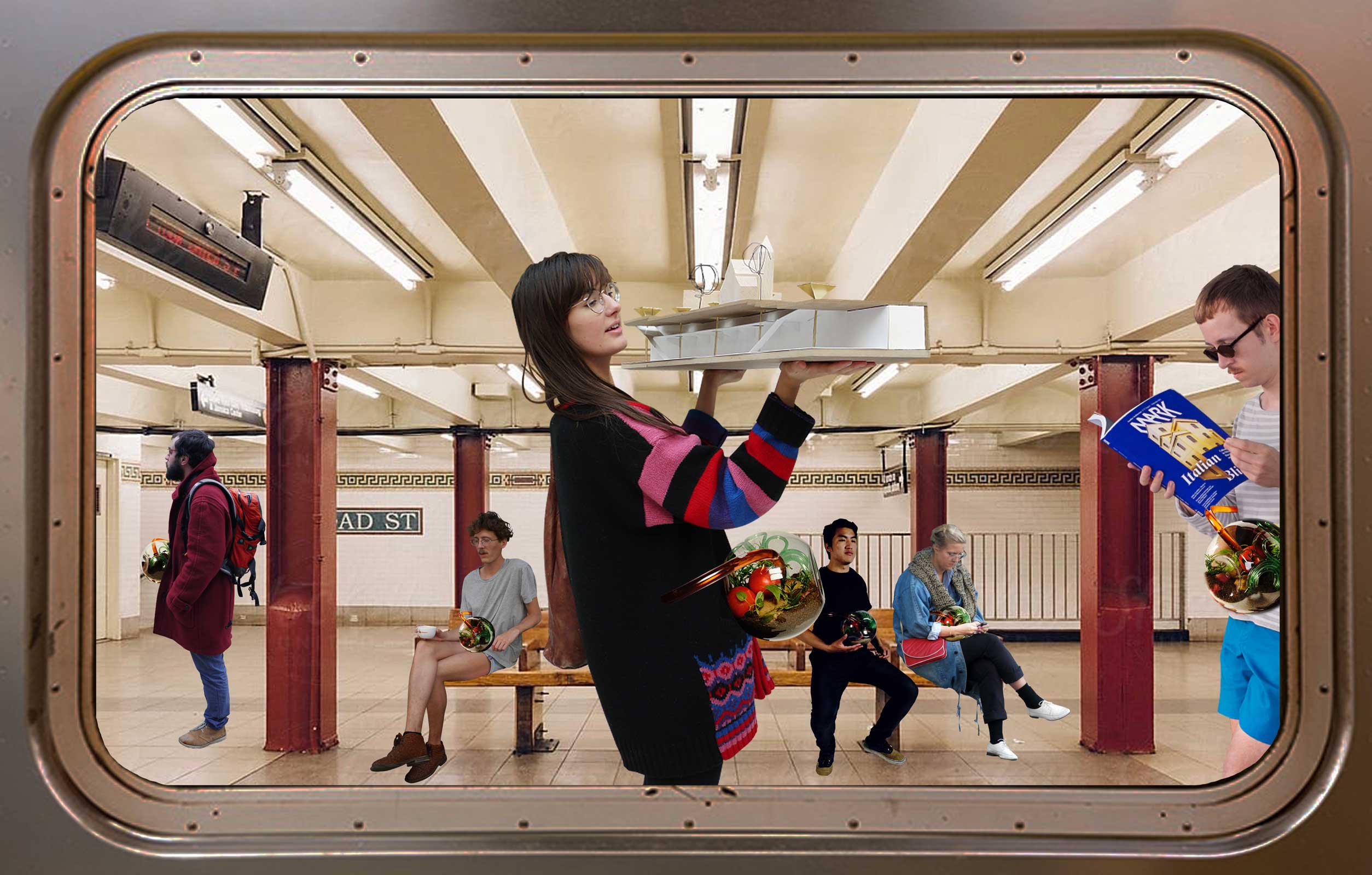
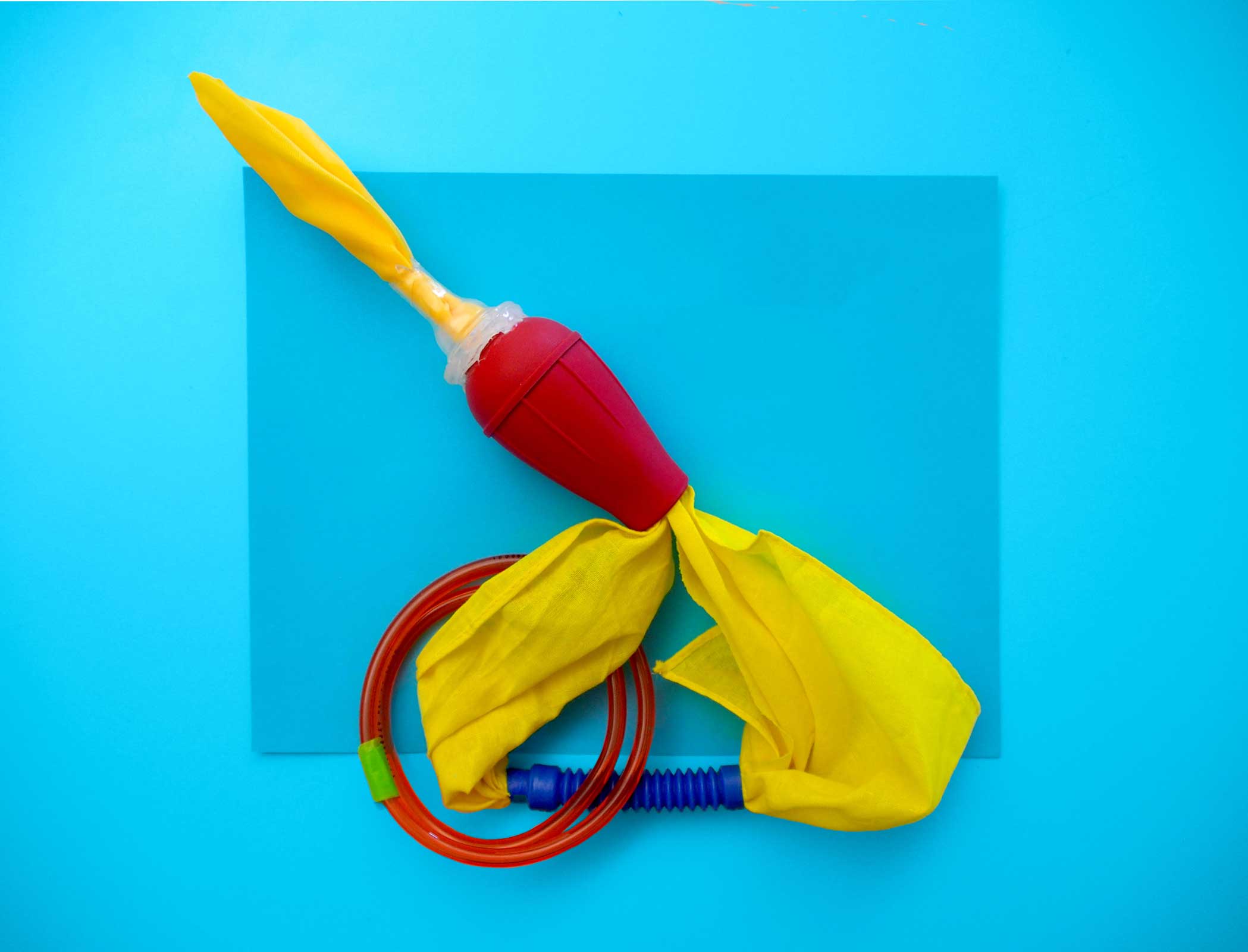
Fall 2018
Imagining America National Gathering
Radical Design for Speculative Futures
“Non-judgemental Space Making Device” made by participants
Imagining America National Gathering
Radical Design for Speculative Futures
“Non-judgemental Space Making Device” made by participants
Radical Design workshops
Radical Design workshops get participants thinking about how the designed things, processes and systems around us might be different if we prioritized different values. They encourage participants to think about implications – both positive and negative – that may come from different priorities.
WORKSHOP STRUCTURE
Each event is focused on a specific system: policing, voting, capitalism, etc. We begin by listing the values participants see prioritized by the current system. For example, Commonbound participants discussed how Capitalism priortizes efficiency, growth, and profit. Next, participants split into small groups of 2-3 people and choose a value that is de-prioritized by the current system. If a current value of policing is punishment, a group might choose to center their thinking on problem solving or transformation. They would then work to imagine a system that achieves public safety (the promise of policing) by prioritizing transformation instead of punishment.
A series of excercises guides groups along the way, asking them to reflect on the value itself, imagine multiple ways a world that prioritizes this value would be different from our own, and then writing and drawing about experiences related to (e.g.) public safety within that world.
At the end of the workshop, participants make an artefact that would exist within the world they’ve imagined. They’re encouraged to build at 1:1 scale and to share how it would be used with the group. This exercise builds on The Extrapolation Factory’s 99 cent futures workshops that guides participants in making products that would exist in 99 cent shops and dollar stores of the future.
WORKSHOPS HAVE BEEN OFFERED AT...
- Imagining America (Chicago, October 2018)
- Creative Reaction Lab (St. Louis, June 2018)
- Commonbound Conference, New Economy Coalition (St. Louis, June 2018)
- Washington University AIGA (St. Louis, April 2017)
- and as a part of other Washington University courses such as Designing Creativity and Design & Research
If you would like to host a Radical Design workshop or project with your group or organization, please email designradicalfutures@gmail.com.
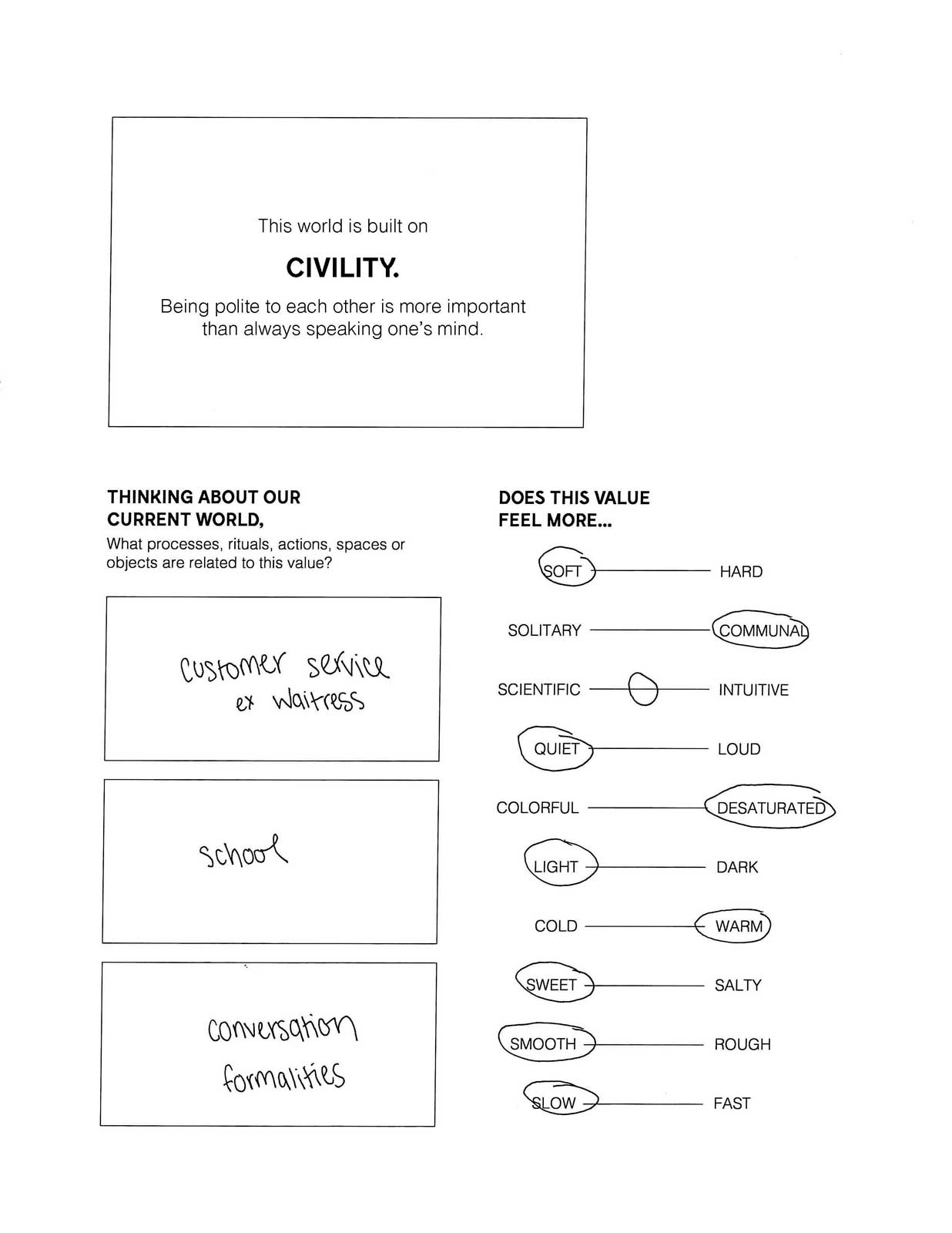


Spring 2019
Radical Design: Making Civic Experiences at Washington University in St. Louis
First class, Radical Design workshop
Rachel Roberts & Mimi Shang
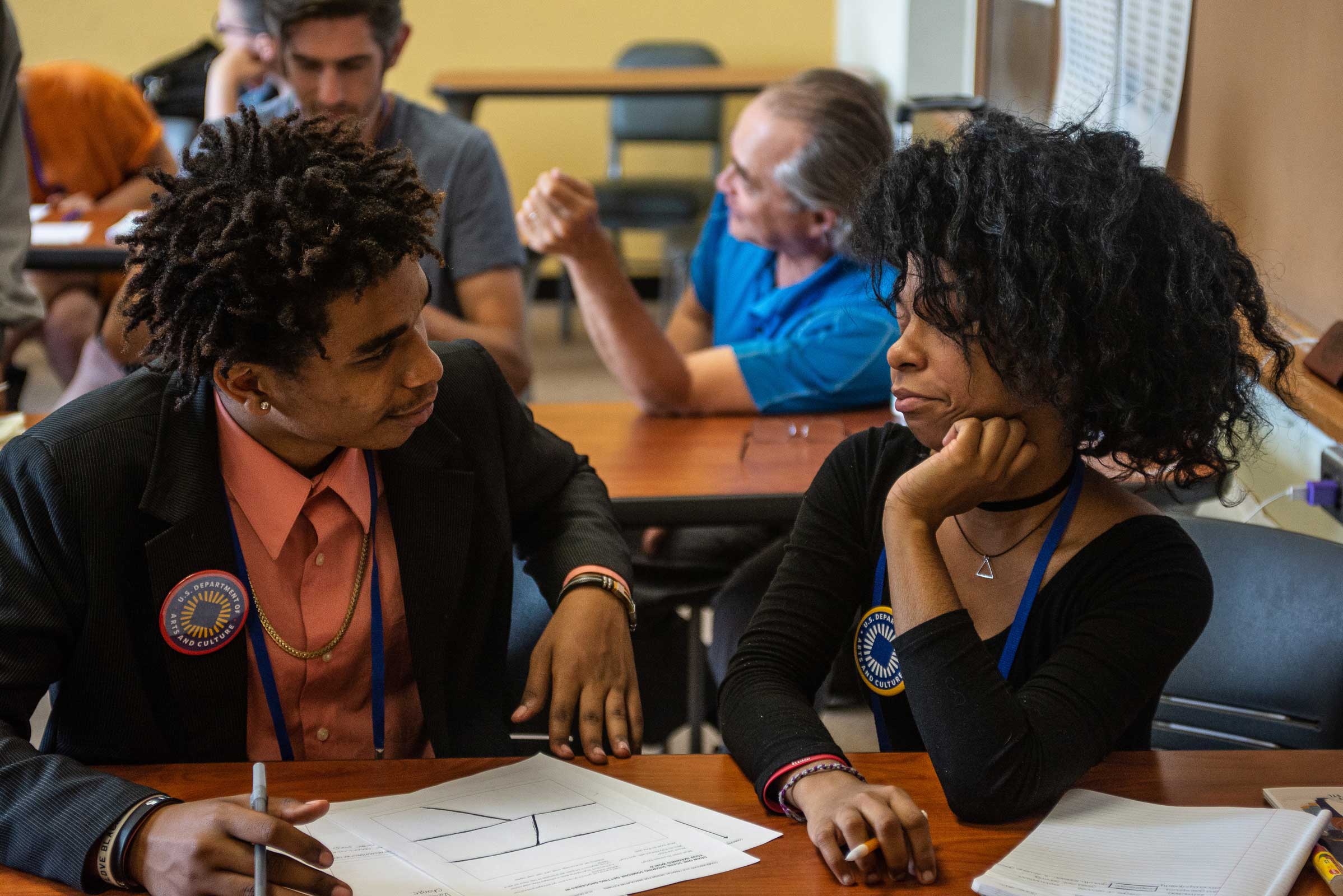
Photo by Kurt Hutchinson.
Video by @doitbetterdesign.
Summer 2018
Commonbound Conference, New Economy Coalition
Radical Design for Speculative Futures
![]()
Summer 2018
Design to Better [Our Community] Summer Academy, Creative Reaction Lab
Radical Design
Summer 2018
Commonbound Conference, New Economy Coalition
Radical Design for Speculative Futures
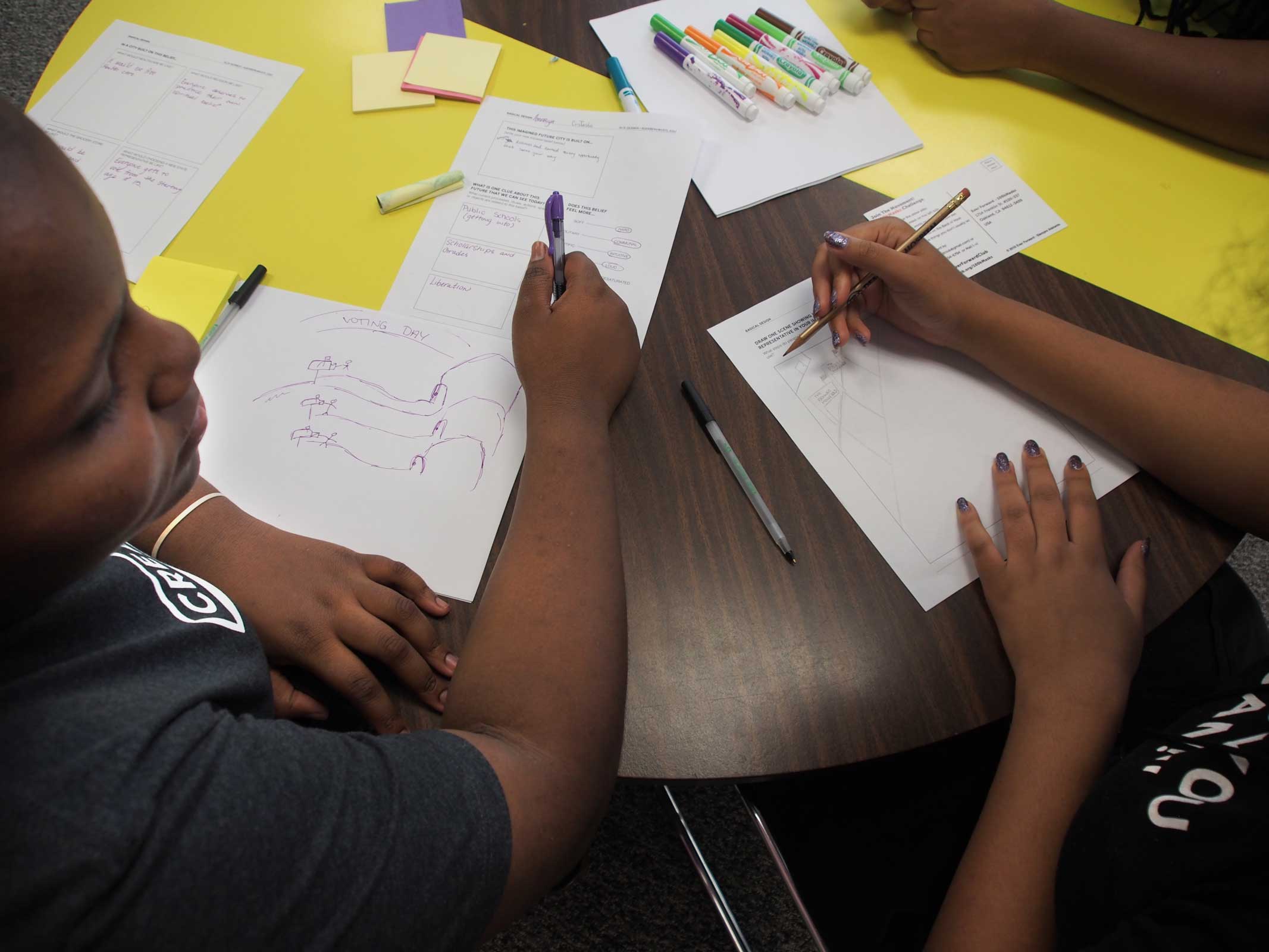
Summer 2018
Design to Better [Our Community] Summer Academy, Creative Reaction Lab
Radical Design

Fall 2017
Washington University in St. Louis
Radical Design: Making Civic Experiences
Human Action Watch Committee (HAWC)
Jackson Kleeman, Brandon Krisko, and Yuwei Pan

Fall 2017
Washington University in St. Louis
Radical Design: Making Civic Experiences
Andrew Friedman, Marleigh Friedman, Ashley Holder
Phoenix Ceremony
In contrast to a typical design prototype (with a T) which seeks to try out a solution in order to improve it, a provotype (with a V) uses designed artifacts to provoke visions of alternative futures in order to open different possibilities. After students developed alternative worlds and the things that would exist within them, they were asked to perform a scenario within the world in order to invite others in and provoke thinking about how things might be different.
Andrew, Marleigh and Ashley’s project imagines a world without policing, where we prioritize preventative and restorative responses to violence and conflict. They titled their project “Mental Health is Public Health; Public Health is Public Safety” and created a Natural Emotional Spirit Tracker (NEST), a bracelet that all community members wear to reflect their current emotional state. The group also imagined a communal orb that would reflect the overall emotional state of the community – when the orb reflects a conflicted or tense emotional landscape, an “emotion-sharing ritual” called a ‘Phoenix Ceremony’ would be called to talk it out.

Ashley writes, “The goal of the ceremony is for the community to gather together and cleanse itself of the negative emotions through emotional vulnerability, collective discussion, and community-based problem-solving. Citizens would gather at the CNEST and build a ceremonial bonfire, which would be used as a cleansing agent in the ritual. When the whole community is assembled, citizens are given time to speak individually in front of the group about their emotional state. After speaking, a citizen removes the NEST from their bracelet and drops it into the fire. Over the course of the ceremony, as emotions are shared and community issues are mediated and resolved, the extreme heat of the fire drains the colors from the NESTS. At the conclusion of the ceremony, citizens take a NEST from the ashes of the fire and place it back in their bracelet, where it will remain until the next ceremomy.”
___
“Congratulations on receiving your first or Natural Emotional Spirit Tracker from the Community Council! This NEST bracelet will help you navigate your emotions, and facilitate connection and empathy between all community members. The member is only as healthy as their community, and the community is only as healthy as its members. When someone harms another person, they also harm the larger community we are all a part of. We applaud your efforts to stop interpersonal harm by tying the connections and knots in our social fabric as tight as possible. Emotional stability is the bedrock of all else. In helping others, we help ourselves. In helping ourselves, we also help others. Negativity, pain, and struggle are accepted and redirected to a path of rebirth, renewal, and emotional knowing. We trust that you will take this responsibility to yourself and others seriously. So come together as individuals, and come together as community. Let us join! Gather! Intertwine”



